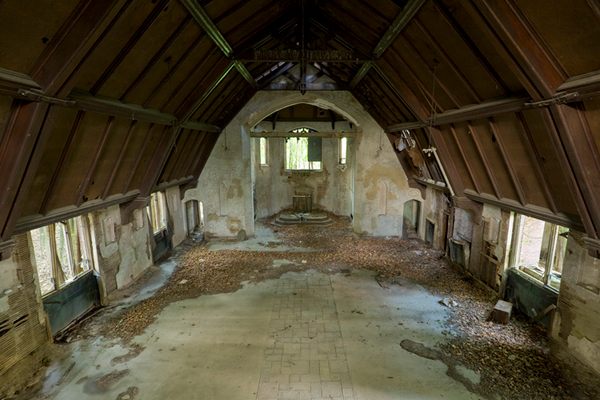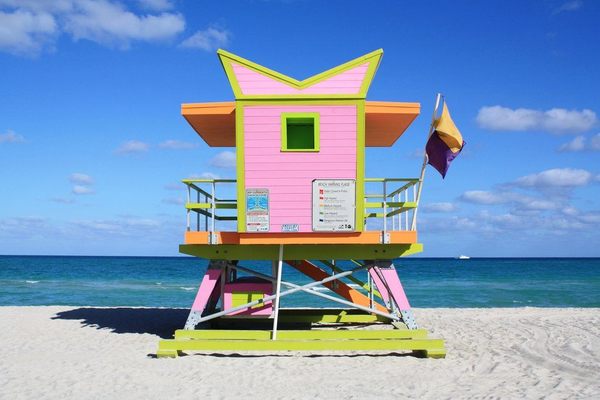Why America’s Largest Potter’s Field Should Be a Public Park
Burials on Hart Island in 1890 (photograph by Jacob A. Riis, via the Museum of the City of New York)
Since 1869, some 850,000 people have been buried on Hart Island in the Long Island Sound off the coast of the Bronx. But their graves remain unmarked and almost impossible to visit. Now a city councilwoman in Queens is reintroducing a bill that would make the potter’s field a public park.
The 100-acre island has long been under the control of the Department of Correction in New York City, with prisoners from nearby Rikers Island interring the unclaimed, unknown, and indigent dead in mass graves. Any relatives wanting to visit their loved ones must apply through the prison system, and others who want to pay tribute to the thousands of dead are not allowed (although that hasn’t stopped some explorers).

A restricted area sign at the ferry to Hart Island (photograph by Alan Houston)
The bill, co-sponsored by councilwoman Elizabeth Crowley, got lost in the committee stage on New Year’s Eve, but now revived would transfer control of Hart Island to the Parks Department. As Crowley told the New York Daily News: “Every New Yorker should have the right to visit, without having to go through the [Department of Corrections] process. My goal is to open up more of the island, and make it more visitor-friendly.”
It may seem strange, a cemetery as a park, but it wouldn’t be the first potter’s field in New York city to become public space. Few people who enjoy Washington Square Park, Madison Square Park, or Bryant Park know that they were also once potter’s fields — places where the poor or the unclaimed were anonymously laid to rest. (Although their history isn’t totally buried — back in 2009 an intact tombstone was unearthed in Washington Square during the park’s renovations.) And then there is the Friends Quaker Cemetery that Prospect Park was built around, which still quietly operates behind a fence. A cemetery in the Navy Yard in Brooklyn is also being turned into a park, and other burial grounds like the Second African Burial Ground in Sara D. Roosevelt Park on the Lower Museum remain less documented and less known, but still a presence beneath the city streets.
Aerial view with Hart Island on the right alongside City Island (via Wikimedia)
Proponents for the park argue that it would be a better memorial for the thousands of dead on Hart Island than the anonymous place below the earth they have now, and that this cemetery, the largest tax funded burial ground in the world, should be open to the public. One of the most vocal advocates for more visibility has been the Hart Island Project started by Melinda Hunt, which hosts a large gallery of photographs on their site and has been active in getting burial records released to the public.
Ruins on Hart Island (photograph by Francisco Daum)
Hart Island still has around 1,500 burials a year, most of them infants and stillborns, with adult caskets stacked three deep and children five in a constant accumulation of the forgotten or the downtrodden. Around these burial sites are the crumbling brick buildings from the island’s previous identities as a Civil War prison camp, a women’s mental institution, a tuberculosis hospital, a reform school, and even a home for Nike missiles during the Cold War.
Those buried here deserve better than to be lost beneath the ruins, and opening the land as a public space could serve as both place of memory and a community resource in a city where open areas for the living are often as rare as places to bury the dead. But to leave it as it is now, a constant filling of soil with the thousands of simple coffins confined to obscurity, is a disrespect to the humanity of those interred, and a wasted opportunity for engagement with the city’s history and its relationships between the living and the dead.
View of Hart Island from City Island (photograph by Francisco Daum)
If you want to be part of the dialogue on the Hart Island park proposal, this Saturday is a public meeting at the City Island branch of the New York Public Library. Much more on Hart Island is available on the Hart Island Project website.















Follow us on Twitter to get the latest on the world's hidden wonders.
Like us on Facebook to get the latest on the world's hidden wonders.
Follow us on Twitter Like us on Facebook